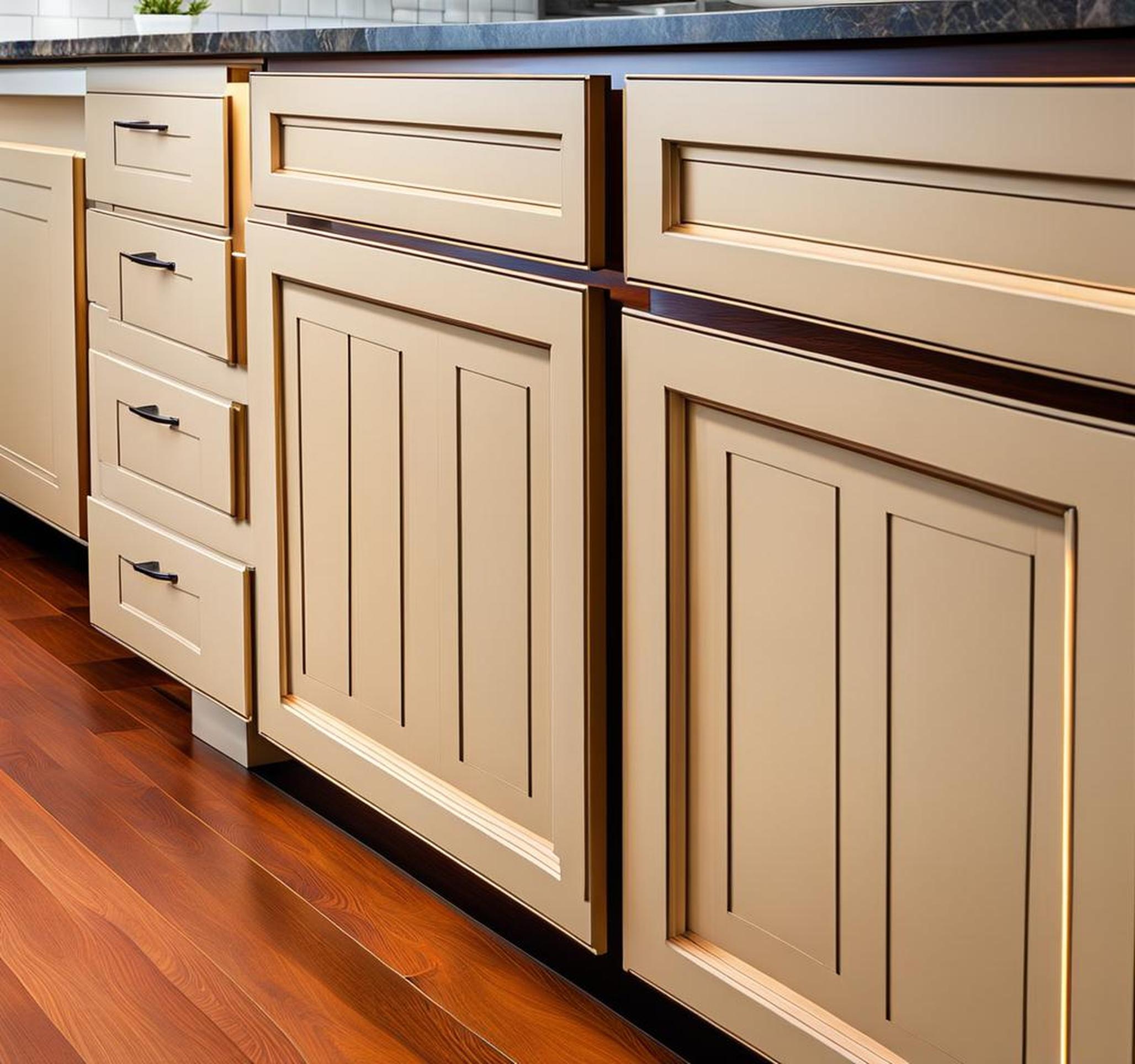When designing or remodeling a kitchen, choosing the right cabinet door style is an important decision that impacts aesthetics, functionality, and budget. Two of the most popular options to consider are full overlay and partial overlay cabinets.
Full overlay cabinets feature doors and drawers that almost completely cover the face frame, providing a streamlined, contemporary look. Partial overlay cabinetry has more of the face frame exposed around the doors and drawers, creating a more traditional style.
Full Overlay Cabinet Design
Definition and Description
With full overlay cabinets, the doors and drawers cover nearly the entire face frame, leaving just a small reveal or gap between them rather than exposing the frame. This creates a very sleek, modern look and helps maximize usable space inside the cabinets since minimal face frame encroaches on the storage capacity.
| Doors cover nearly full face frame | Contemporary aesthetic |
| Just slight reveal between doors/drawers | Hinges concealed |
Benefits of Full Overlay
Full overlay cabinetry brings several advantages that make it a popular choice:

- Sleek, contemporary aesthetic – the minimal face frame exposure provides very clean lines
- Easier to clean – fewer grooves and corners for grime to collect
- Maximizes usable interior capacity due to lack of face frame
- Hinges are completely concealed from view by doors/drawers
Potential Downsides of Full Overlay
The fuller coverage of full overlay cabinets also comes with a few disadvantages to weigh:
- Typically more expensive due to greater materials needed and more complex installation
- Lack of substantial face frame reduces overall durability
- Doors/drawers must be aligned very precisely during installation
Partial Overlay Cabinet Design
Definition and Description
Partial overlay cabinets have doors and drawers that cover only part of the face frame. A portion remains visually exposed around the door/drawer openings, creating a more traditional look. Exposed hinges allow easy access for adjustments.
| Doors overlay just part of frame | Face frame partially visible |
| Exposed hinges | Traditional style |
Benefits of Partial Overlay
There are some advantages that partial overlay cabinets can offer:
- Less expensive than full overlay
- Visible face frame adds structural durability
- Exposed hinges allow adjustments as needed over time
- Can work well in smaller or irregularly-shaped spaces
Potential Downsides of Partial Overlay
Partial overlay cabinets also come with a few trade-offs:
- Visible face frame looks less streamlined and modern
- Exposed hinges and gaps collect dust and dirt over time
- Slightly smaller interior capacity due to face frame
Comparing Key Factors
When deciding between full overlay and partial overlay cabinets, there are several important factors to stack up against your needs:
Aesthetics
Those favoring a very sleek, contemporary look will likely prefer full overlay cabinets with their minimal face frame exposure. Homeowners wanting a more traditional or transitional style may embrace the visible face frame of partial overlay designs.
Cost and Budget
In most cases, full overlay cabinets come with a higher price tag due to more materials required for construction and more complex installation. Partial overlay is often the more budget-friendly route.
Durability and Longevity
Partial overlay cabinetry with its visible face frame may have greater structural durability over many years of use. The lack of substantial face frame support with full overlay cabinets could potentially impact longevity.
Ease of Cleaning
Full overlay cabinets tend to require less effort to keep clean because there are fewer corners, crevices and exposed edges for grease, grime and dust to accumulate in over time.
Storage Capacity
Maximizing kitchen storage space is simpler with full overlay cabinets. The lack of face frame protruding into the interior means cabinets can pack in more contents with ease.
Additional Buying Considerations
Along with the factors above, a few other things to keep in mind as you evaluate full vs. partial overlay cabinets:
Kitchen Size and Layout
For smaller kitchens or layouts with many corners or irregular angles, partial overlay cabinets can be a good fit since they allow greater flexibility in working around challenging dimensions.
Design Style Preferences
Those wanting a very streamlined, contemporary kitchen will likely be drawn to full overlay cabinets as their minimal face frame exposure suits this aesthetic well. Homeowners preferring traditional or transitional spaces may embrace the familiar look of partial overlay’s visible frame.
Quality and Durability Factors
While cabinet overlay impacts aesthetics, quality factors like hinge durability, drawer alignment, and door finish warrant equal attention during selection. Opting for full-extension drawer slides, soft-closing hinges, and quality surface materials ensures lasting performance and beauty regardless of overlay style.
When making an overlay decision for new kitchen cabinets, carefully weigh your priorities in terms of budget, ease of maintenance, storage needs, installation requirements and visual style preferences. There’s no universally “best” option between full vs partial overlay–one offers a Contemporary look with maximized capacity, while the other provides a versatile traditional aesthetic. Carefully lining up each overlay style’s strengths and weaknesses with your goals ensures cabinets that check all of your boxes for both form and function over the long haul.
